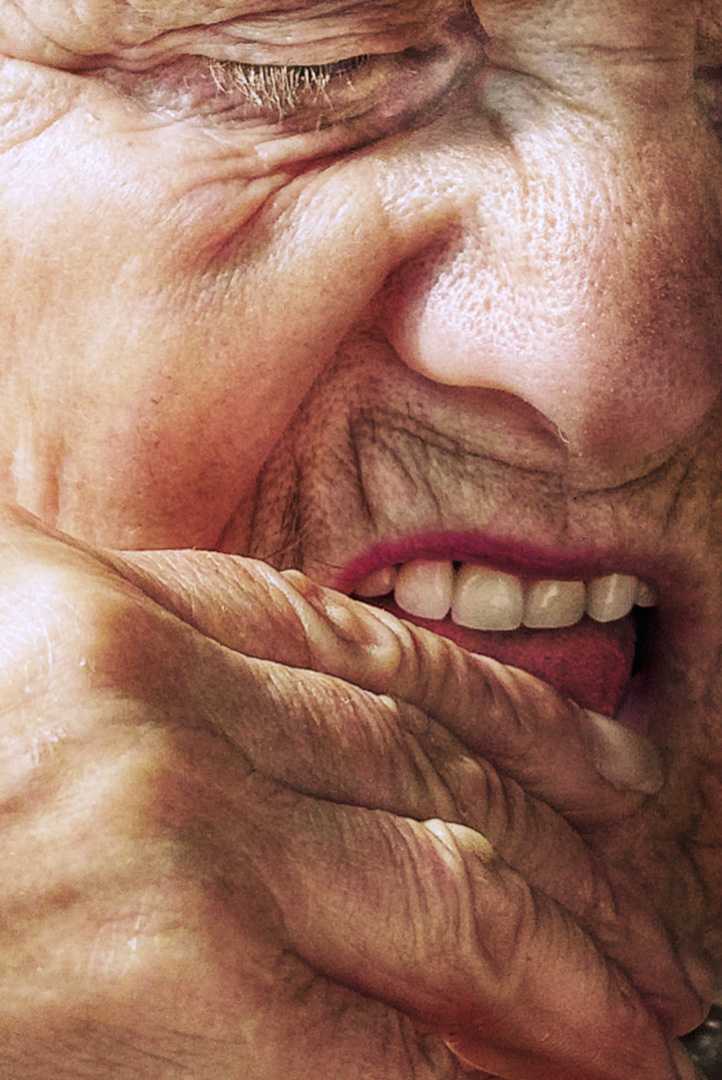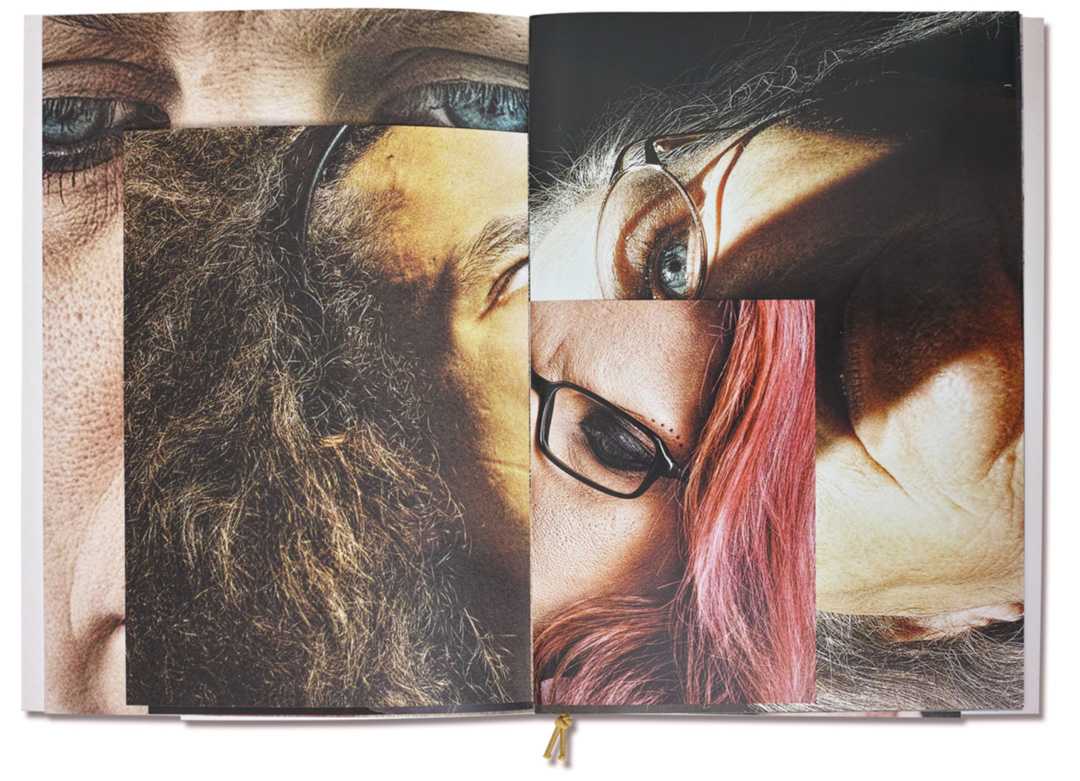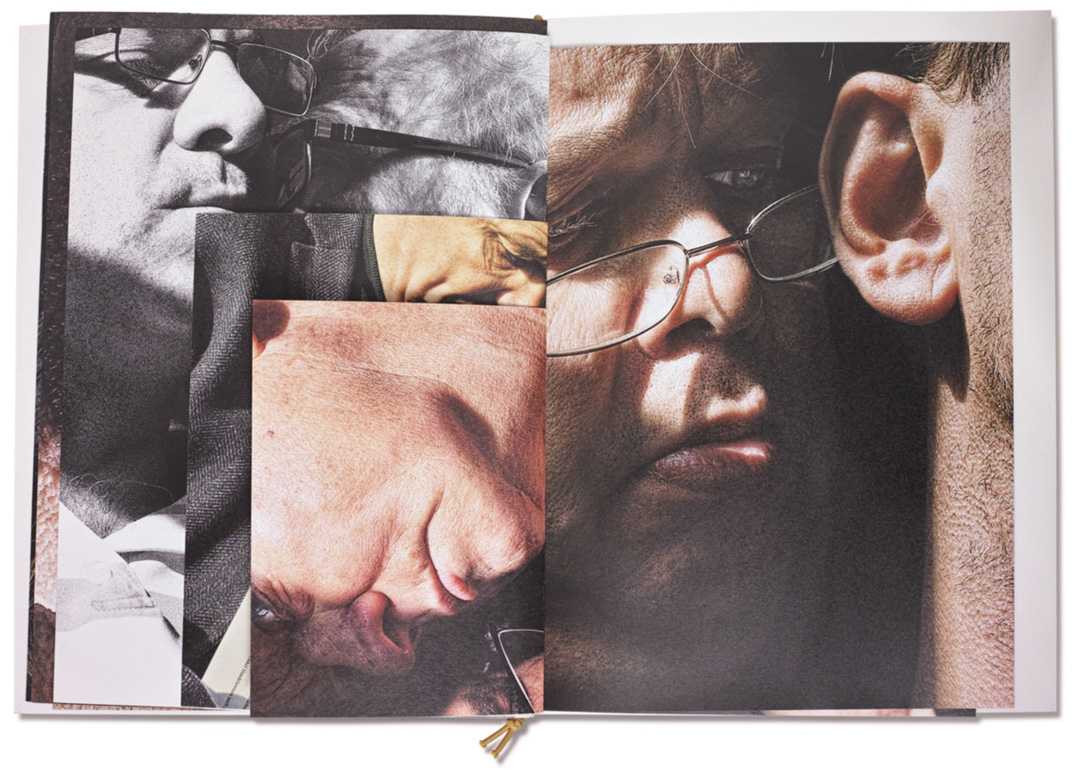







GUP TEAM
Code Unknown

Loosebound with elastic band / 58 pages / 270 x 370mm
3,800JPY / €39.10
Taken over months of travelling, Fujiwara photographs his subjects in close-up and then edits the images in order to make the person depicted unrecognisable, by means of selecting faces obscured by shadow, cropping extremely close so the viewer sees no personal style choices the subject could have made and in some, digitally editing the image. Fujiwara notes in the accompanying essay that technology is moving so quickly and cameras are so much more sophisticated than the human eye, that “you might not even realise that the person in the picture is you.” The artist does this in order to “obscure the individuality”, disallowing the viewer from reading the various unspoken codes we project by how we dress.
The images are unflattering, and in some places, almost grotesque, due to the presence of deep pores, burrowing wrinkles and wiry hair all over the rough-looking skin. They were taken while the subjects were absentmindedly rubbing their face or squinting from the sunlight, contrasting the manicured and sanitised portrait imagery we might’ve become accustomed to. The faces almost start to become one homogenous image, as the eye is unable to determine what to try and interpret, all one sees are meaningless details. Printed larger than life, these details take on unnatural proportion.
The format of the book itself adds to the confusion, as the different types of matte and glossy paper come in all different sizes, meaning images layer over and interrupt each other. The orientation of photos is also mixed, some spreads feature a cropped face on one side and on the other, an extreme close-up detail from that same face, but rotated ninety degrees. The result is a bombardment of information, referencing the busy nature of a city train, the brain overloaded with shades of pink, beige and brown, pockmarked and damaged by daily life. It becomes difficult to identify or decipher any distinguishing feature, all faces and actions portrayed become the same.
Fujiwara, originally from Japan, notes how Western cities like Berlin are full of people form different ethnic backgrounds, so trying to read the various codes from these cultures can be impossible. Code Unknown displays an outsider looking in, noticing detail that make us all the same and removing all social convention. The book is an innovative look into how we are portrayed in modern society, it rebels against our acute awareness of an ever-present camera and questions the privilege of privacy in the 21stcentury.